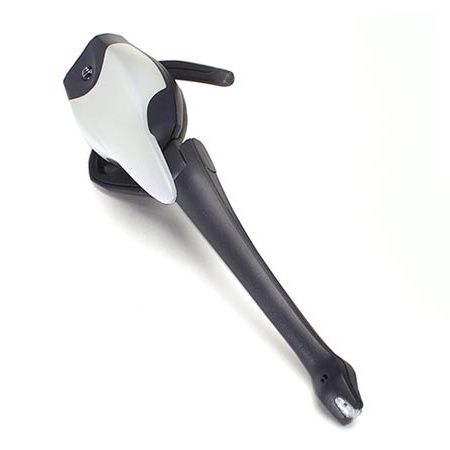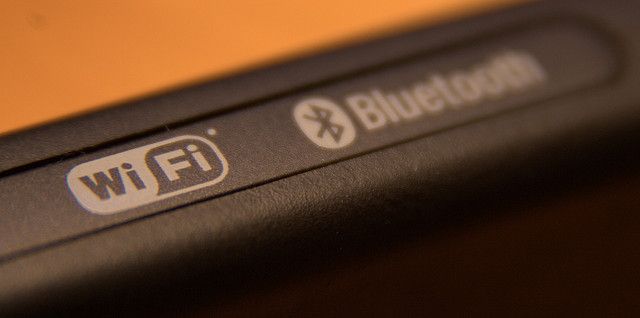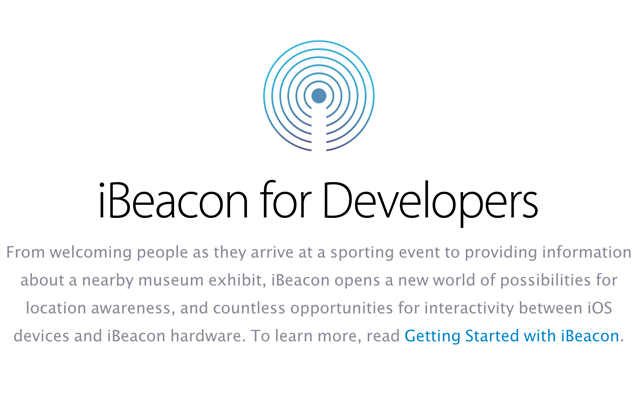Bluetooth is the forgotten star on the device specifications sheet. While it isn't going to turn any heads, every once in a while you forget just how valuable it is; then remember why it's there in the first place.
It's not a feature we talk much about anymore, but the standard is improving, and it's getting to the point of becoming extremely relevant in the near future.
With Bluetooth 4.0, it's not so much the technology as it is the leap forward that gets people like me excited. Each iteration of Bluetooth has brought it one step closer to becoming a technology that bridges the gap between the current state of connectivity and a true, always-on society. Today, it's time to look at what it is, and some of the reasons it's worth getting legitimately excited about.
The Reasons We All Hate Bluetooth
By now we all know what Bluetooth is, but if you're after a more thorough overview, we have a comprehensive description of Bluetooth from way back in 2009 that's just as true today as it was back then.
Instead of reliving the basics, let's instead focus on why it was never really all that exciting.
For one, Bluetooth has a relatively short range. It was never intended to be a WiFi replacement and this much was evident in its dismal speeds (3Mbit/s until version 3.0+HS).
Other frustrations stemmed from its propensity for interference from other devices in the 2.4GHz range, and the rage-inducing (and often completely random) incompatibility issues faced when it comes to pairing some Bluetooth-enabled devices.
In short, Bluetooth has never been all that sexy due to some fundamental flaws in the ways previous iterations worked - or didn't work.
Bluetooth Versions Compared
Bluetooth 1.x
While nearly extinct now, Bluetooth 1.x provided the framework for each of the newer generations. It featured very basic capabilities, such as a theoretical 1Mbps data transfer rate (which actually maxed out around 721 kbit/s) and some severe issues with connectivity.
Some of the major flaws in the technology were the use of version 1.0 and 1.0B as separate standards, which made universal connectivity nothing more than a pipe dream. In addition, anonymity was impossible due to mandatory Bluetooth hardware device address transmission in the connection process.
Bluetooth 1.1 and 1.2 were slightly better. Bluetooth v1.1 fixed most of the connectivity issues in the 1.0B specification and boosted signal strength. Version 1.2 allowed for adaptive frequency-hopping (AFH) which improved some of the problems with 2.4GHz device interference. Additionally, we saw the Extended Synchronous Connections (eSCO) which re-transmitted corrupted data packets for better transmission quality.
Bluetooth 2.x
Most of us had never heard of Bluetooth until the 2.0 standard released in 2004. While the connectivity issues remained; Bluetooth 2.0 featured the introduction of EDR (Enhanced Data Rate) for significantly faster data transfer speeds. Theoretical speeds of EDR were hyped at about 3Mbit/s, but the reality was a top transfer speed of around 2Mbit/s.
It took three years for the next version of the technology - Bluetooth v2.1 + EDR - to come to fruition. The milestone feature in v2.1 was SSP (Secure Simple Pairing) which aimed to improve the process of connecting devices to one another over Bluetooth. With SSP came an additional technology, EIR (Extended Inquiry Response), which allowed for better filtering of Bluetooth-enabled device.
In theory, it was attempting to remove most of the haystack before searching for the needle. While it helped, you ultimately still found the needle by accident. That is to say, a successful connection wasn't planned, but it was always a happy occurrence, even if there was a little pain involved.
Bluetooth 3.x
The Bluetooth SIG (Special Interest Group) adopted version 3.0 in early 2009. While there were numerous technological advancements, the most important of these were the HS (High-Speed) standard and the introduction of Enhanced Power Control, which actually forms the foundation for what makes Bluetooth 4.0 so special.
Bluetooth HS uses AMP (Alternative MAC/PHY) to introduce 802.11 (a common WiFi standard) as a method of high speed transfer. Using HS allows Bluetooth transfer rates to exceed 20Mbit/s through use of 802.11 to transfer larger packets.
The discovery, initial connection and configuration all take place using standard Bluetooth technology, but the addition of AMP allows devices to transmit large amounts of data back and forth using 802.11 when needed. Smaller packets and idling systems still use traditional Bluetooth connection technology.
The Enhanced Power Control feature allows for a smart adjustment of power based on perceived needs by the device. For example, a Bluetooth-enabled device (such as a smartphone) has the option to operate at the minimum power level needed to retain a quality connection while increasing the power consumption if you were to move the phone further from the device it's connected to.
What Does Bluetooth 4.0 Bring to the Table?
Bluetooth 4.0 - or "Bluetooth Smart" - was released in 2010, just a year after 3.0. While the release itself wasn't all that exciting, the implications that we're just now beginning to understand after the release of v4.1 and v4.2 are making some realize the potential far exceeds gaudy ear pieces and in-car streaming (or mp3 playback).
The release of 4.0 saw an improvement in connectivity through use of three main protocols: classic Bluetooth, Bluetooth High Speed and Bluetooth Low Energy (BLE). Bluetooth-enabled devices are now smart enough to use the appropriate protocol depending on required device protocol standards, or application-specific need.
Apart from an improvement in connectivity, 4.0 features a number of additional benefits. The most notable of these is the Low Energy protocol (LE).
In days past, Bluetooth provided a notable parasitic effect on devices by increasing the rate at which battery power was consumed. Staying connected, or constantly searching for new devices to connect to, significantly shortened the battery life on most devices. Through the newer low energy technology, Bluetooth devices can remain connected indefinitely without much of an effect on battery life.
Additionally, single-mode Bluetooth chips are cheaper than ever, leading us to a future that could potentially feature throw-away chips for single use applications. While we're not there yet, this level of affordability opens the doors to a significant number of new uses which could continue to spur mobile device innovation for years to come.
Why It Could Be a Key Piece of the Always-on Future
The low energy mode and 24Mbit/s transfer rate make Bluetooth an ideal solution for seemingly-stalled technologies such as smart wallets and the IoT (Internet of things).
While Bluetooth was once billed as the solution to completely connected devices, battery usage, connectivity and range-related issues offered a bit of a hurdle. With these problems mostly addressed, and improving with each new Bluetooth protocol, the hurdles are starting to appear more like steps rather than obstacles impeding our progression toward a completely connected stable of devices.
As far as the digital wallet solution, Bluetooth offers possibly the most straightforward path to complete digital currency adoption. In fact, many industry leaders in the digital wallet space (such as Apple and PayPal), as well as major retailers are betting heavily on beacon-based technology that makes use of Bluetooth's LE proximity sensing to transmit (or recognize) a unique identifier.
Put simply, with less battery drain on a device, Bluetooth serves as an always-on technology. Beacons are devices that send a signal to your device when you're in proximity of the sensor.
Here are just a few of the ways major companies are already using the technology:
Macy's: Just in time for the holiday shopping season, Macy's deployed beacon technology in over 800 stores nationwide. The beacons tracked customer movements throughout the store and offered product recommendations and coupons based on their location.
Major League Baseball (MLB): MLB fitted 28 of its 30 ballparks with iBeacons (Apple's beacon technology) for the 2014 season. Ballparks used the technology to push merchandise coupons, offer seat upgrades (complete with mobile payment option), and a push to install the MLB app for additional special offers, content, and information, such as: stadium maps, seating charts, and player information.
Starwood Hotels: In a show of what Bluetooth is actually capable of, Starwood Hotels took a different beacon-based approached. Rather than offering coupons, Starwood allowed guests to check in from their mobile device (rather than waiting at the front desk) and walk straight to their room and open the door using keyless entry activated via Bluetooth beacon when it comes into contact with your phone. If that wasn't cool enough, housekeeping also has access to beacon data so they won't have to disturb you if you're still in the room.
Is It Worth Getting Excited?
Low energy usage, increased range, improvements in connectivity and the sheer number of devices that already feature Bluetooth 4.0 connectivity makes it an impossible technology to ignore. As for what the future holds, I can only speculate; but I can tell you that Bluetooth could change the way we do just about everything on our mobile devices.
Or, it could prove to be a monumental waste of a real disruptive technology. I guess we'll just have to wait and see.
What do you think?
Photo credit: Bluetooth combo wordmark 2011 via Wikimedia Commons, Bluetooth & WiFi by Manuel Iglesias via Flickr





